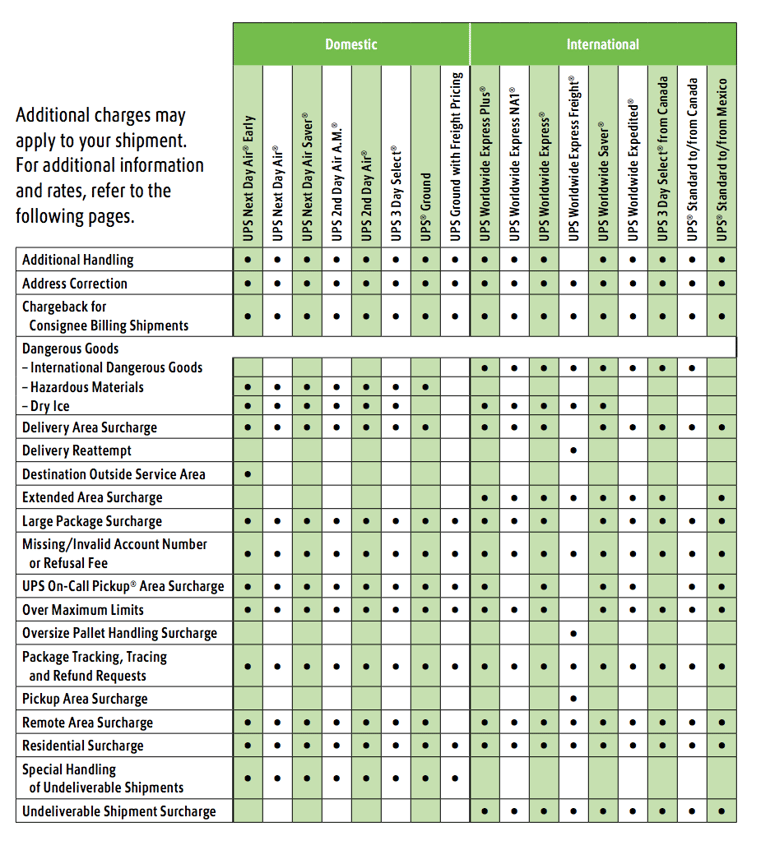What Are True Shipping Costs?
If they had to give an estimate of their true shipping costs, most businesses wouldn’t get anywhere close to an accurate number — either as an average shipping cost per order, or the total amount the business spends on its shipping operation in a year.

This is because most companies define their shipping-related expenses far too narrowly and as a result simply miss many components of their true shipping costs.
Many businesses focus primarily on the carrier tariff when calculating their shipping costs. Some companies also factor in the costs of boxes and other shipping containers, as well as the packing materials they keep on-site for packaging orders.
But a more comprehensive review of a business’s shipping operation reveals that it is far more complex and wide-reaching than this. In fact, shipping touches virtually every area of an organization.
A company’s true shipping costs are actually a combination of hard shipping costs (the carrier’s tariff) and soft shipping costs (which can include labor and other resources from across the company, but which most businesses rarely if ever attribute to shipping).
Let’s take a look at a business’s true shipping costs, going from the most to the least obvious.
1. Carrier’s Invoice
Many businesses use the carrier’s invoice as a shorthand for their overall shipping costs. And while this can indeed represent the majority of a company’s shipping expenses — 80% in some cases — the amount a shipper pays a carrier to deliver a package is far from the company’s total shipping costs.
Additionally, this hard shipping cost itself can vary significantly from order to order, depending on a wide range of factors, such as:
- Actual weight
- Dimensional weight
- Extended area deliveries
- Residential deliveries
- Delivery re-attempt
- Large-package surcharge
- Address correction
- Additional handling
- … and more.
The list of special issues, shipper mistakes and other factors that can add to a carrier’s invoice is long. Here, for example, is a list of items from UPS that can trigger surcharges on its invoices:

2. Fulfillment Labor for Warehouse Staff
A company that manages its own shipping on-site will also need to factor in the wages or salaries of its shipping staff, for:
- Picking
- Selecting appropriate packing materials
- Packing order contents
- Labeling
- Calculating and entering final packed weights and dimensions
- Updating tracking and order statuses
- Re-shelving (or otherwise processing) returned stock
- Replenishing products to primary and secondary bin locations
- Staging packages for carrier pickup
- Training on powered industrial equipment (PIEs)
- Training on maintaining facility compliance with state and federal safety regulations
- … and more.

If the business instead outsources these functions to a drop-shipping partner or third-party fulfillment house, the company will need to add that service provider’s fees to its overall shipping costs.
Additionally, if a business maintains an in-house infrastructure for inventory management and shipping, it will also need to add the costs of all relevant capital expenditures — for example, any warehouse computer equipment the shipping staff uses to view and print orders.
3. Fulfillment Labor (and services fees) for working with a drop-shipping service
Businesses that do not keep on-site inventory of the products they sell, but instead outsource the shipping function to a drop shipper, still need to factor in their internal labor costs of working with those drop shipping partners. These internal costs, of course, will be in addition to the fees (usually set on a per-order basis) that a business is paying the drop shipper for picking, packing and shipping its items.
Those internal labor costs include:
- Overseeing the customer service function (which is particularly important with a drop shipping arrangement, because the business itself is often not in control of which carriers or services the drop shipper uses)
- Managing the company’s own carrier accounts (if they prefer to work this way instead of transferring delivery responsibilities and choices to the drop shipper)
- Monitoring order status at all stages (from picked, to packed, to ready for pickup, to out for delivery, etc.) and communicating these updates to customers
- Communicating with drop shippers on an ongoing basis and/or to address issues or problems as they arise
- … and more.
4. IT and Marketing Resources
If a business maintains a shipping operation on-site, it must factor in the wages or salaries of its IT and operations teams who manage the network, shipping-related software, customer-facing order-tracking system, computers, printers and any other equipment and technology that serves the shipping infrastructure.
The company will also need to include the wages of the marketing staff responsible for overseeing the shipping process from a customer-experience, customer-acquisition, and business-intelligence perspective. Many businesses today charge the Marketing budget for free shipping costs. And it is Marketing who is frequently overseeing order and shipment status update communications.
The marketing department’s roles include managing the customer communications related to the order-fulfillment process — from sending a thank-you note after a purchase, to delivering the customer regular updates about the status of their shipment. They also use the order-fulfillment data the department is collecting to deliver more relevant and timely promotions to the right segments of its customer list.

5. Customer Service Resources
Just as missing items, mispicks or damaged products in a shipper’s delivery will increase its overall shipping expenses by creating more work for its error- and returns-processing staff, such mistakes will also increase costs to the company’s customer service department. In fact, the frequency of order and shipment status communications is directly correlated to the volume of customer service inquiries. Shipping is a major driver of customer service expense.
Companies that embrace proactive customer updates not only reduce the volumes of customer service inquiries, but also increase post-purchase net promoter scores, and increase the rate at which customers repurchase.
The frequency of order and shipment status communications is directly correlated to the volume of customer service inquiries.
These are a business’s front-line staff, after all, for fielding questions and complaints from customers. When a shipping team packs and sends the wrong item, or an unreliable carrier mishandles the package in transit and delivers the item damaged or broken, that shipper can expect calls to its customer service line. And this cost is directly attributable to the company’s shipping process, which means it is a component of true shipping costs.
6. Packing Materials
Packing material inventory such as boxes, poly envelopes, other types of containers, packing tape, bubble wrap, void fill, etc. — are all a part of shipping-related expenses.
Some companies realize the cost of keeping excess packing material inventory in the DC and resort to stocking fewer standard box sizes. The problem is, most shippers don’t factor in the additional costs incurred due to increases in dimensional shipment charges that appear as hard shipping costs on their carrier invoices. Every business has an optimal number of shipping containers and the quantity and sizes can be determined using real shipment data.
7. Error and Returns Processing
Few businesses attribute these soft costs to their shipping infrastructure, but the labor costs of the employees responsible for handling returns or shipment errors is a sometimes hefty shipping-related expense.
This is because when a business optimizes its shipping process, to streamline the operation and minimize errors, its overall shipping costs go down in part because the company will face fewer expenses in the form of error and returns processing. These costs can include:
- Original shipping charges
- Customer service resources to process returns
- Return shipping charges
- Destroy on site charges (usually for larger items like furniture)
- Return receiving and processing
- New shipment fulfillment and shipping charges
Yes, some companies incur three separate shipping charges for returned items/orders.
8. Accounting Team Resources

One of the least obvious (and least expected) shipping-related expense is the wages of a company’s accounting team. Accounting is responsible for communicating with carriers about invoices, handling rebills when a carrier deems the actual shipment criteria different from the details the business supplied in its request for a quote, and shipment reconciliation.
But because these finance-team resources arise as a direct result of a business’s shipping processes, this expense does reflect a part of the company’s true shipping costs. Not only does fulfillment automation reduce post-delivery finance related work, it also reduces labor in other departments as well.
Not only does fulfillment automation reduce post-delivery finance related work, it also reduces labor in other departments as well.
Shipping Optimization Lowers Total Shipping Costs
As the above list illustrates, businesses typically incur many shipping-related costs that are frequently overlooked, if ever properly attribute to their shipping operations.
But with this deeper insight into how many steps a typical shipping process actually involves, and how many areas of the organization it affects, it becomes clearer how important it is to optimize and automate as much of the shipping process as possible — because it significantly reduces costs throughout the shipper’s entire business.
For helpful advice on how to lower true shipping costs, read our posts You’re Leaving Money on the Table and How to Reduce Shipping Costs, or contact sales@shiphawk.com to speak to our team today!
